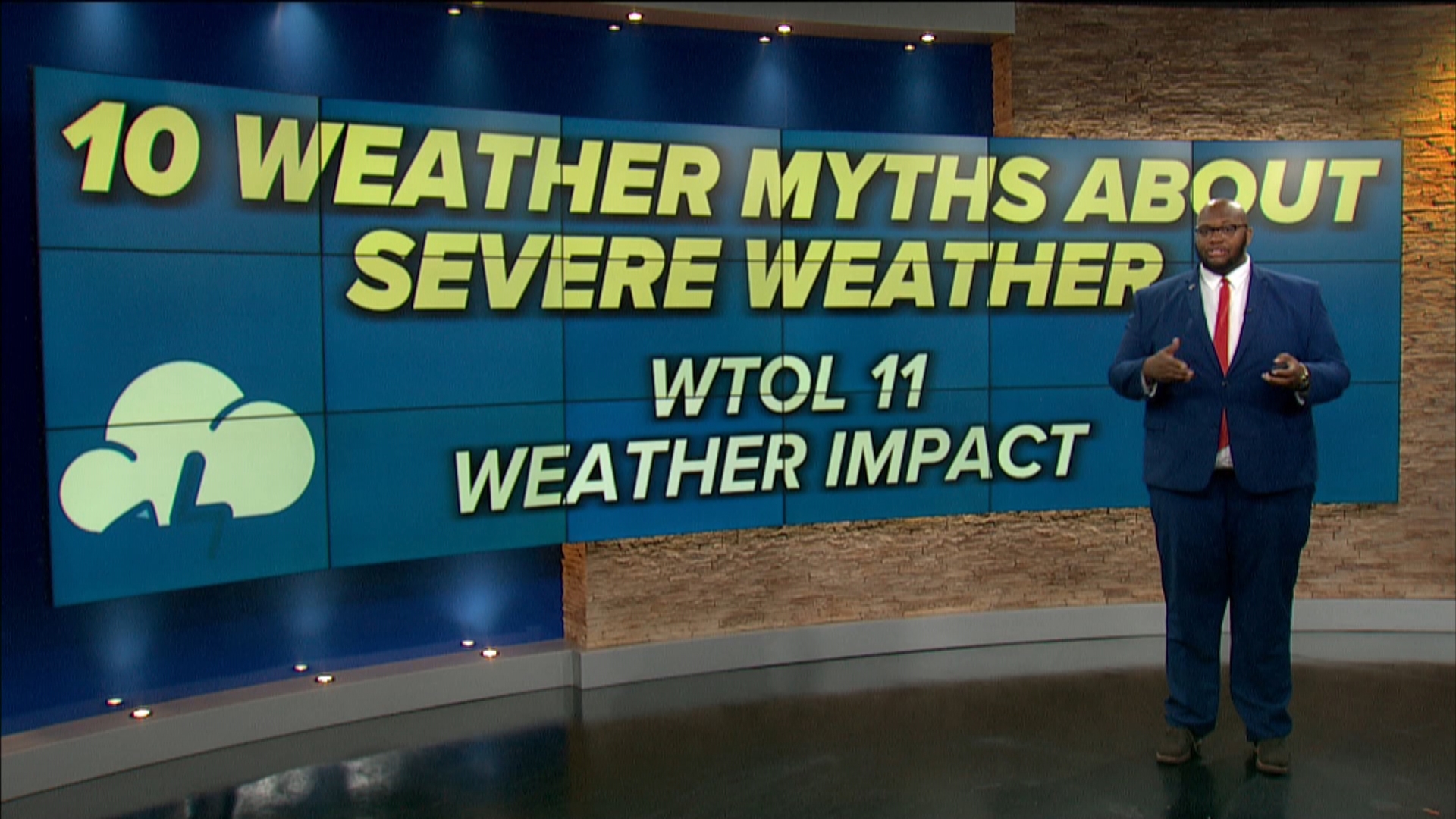TOLEDO, Ohio — Severe weather can be one of the most dangerous weather events across the country. If you are not necessarily familiar with weather or severe weather, it can be scary not to understand how or why severe weather works the way it should.
There are ways to relieve the stress and anxiety of storms, though.
Severe weather can be unpredictable and meteorologists around the world do their best to keep you safe. Knowing when and where severe weather may strike could be the difference between life and death. The facts and characteristics that severe weather brings changes constantly, made up with different ingredients, resulting in each instance being unique.
Here are 10 severe weather myths that are commonly misconstrued:
#1 Does a mild winter set up a busy severe weather season?

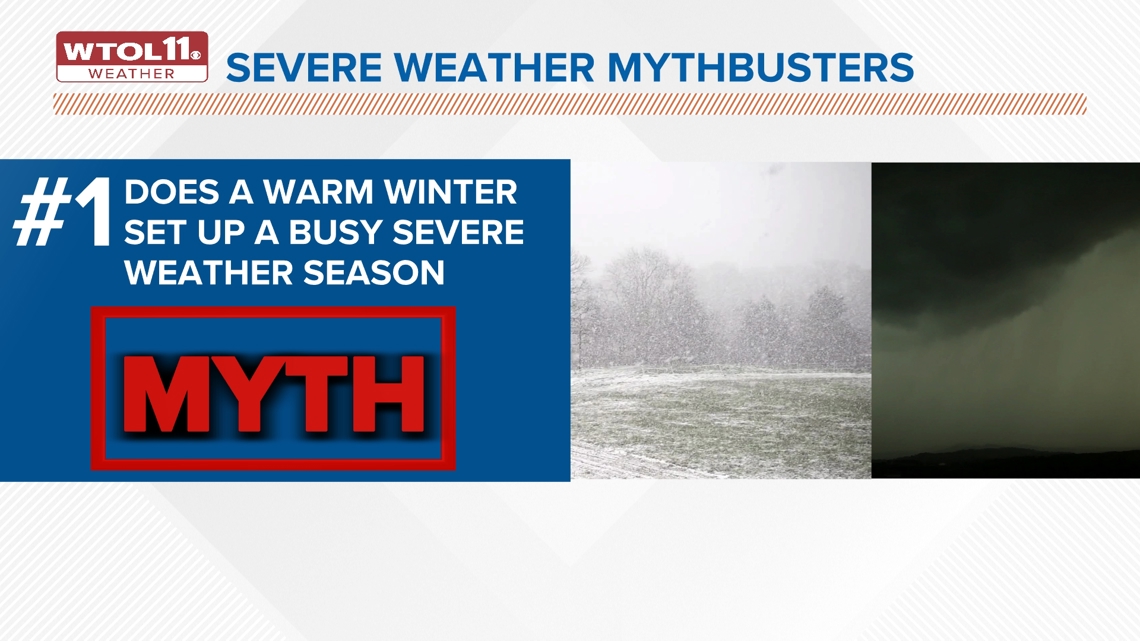
The winter season is not necessarily influenced or associated with the severe weather season. An extremely harsh winter does not mean a quiet severe weather season.
As the climate continues to warm, the possibility of warmer temperatures could result in seeing severe weather earlier, and later in the year, due to warmer weather. But altogether each season is not typically influenced by the other.
As always, it is important to know that severe weather can still happen at any time of the year.
The frequency in which severe weather happens is just less common during the winter due to the lack of moisture and instability that storms need to develop.
#2 Rubber soles protect you from lightning

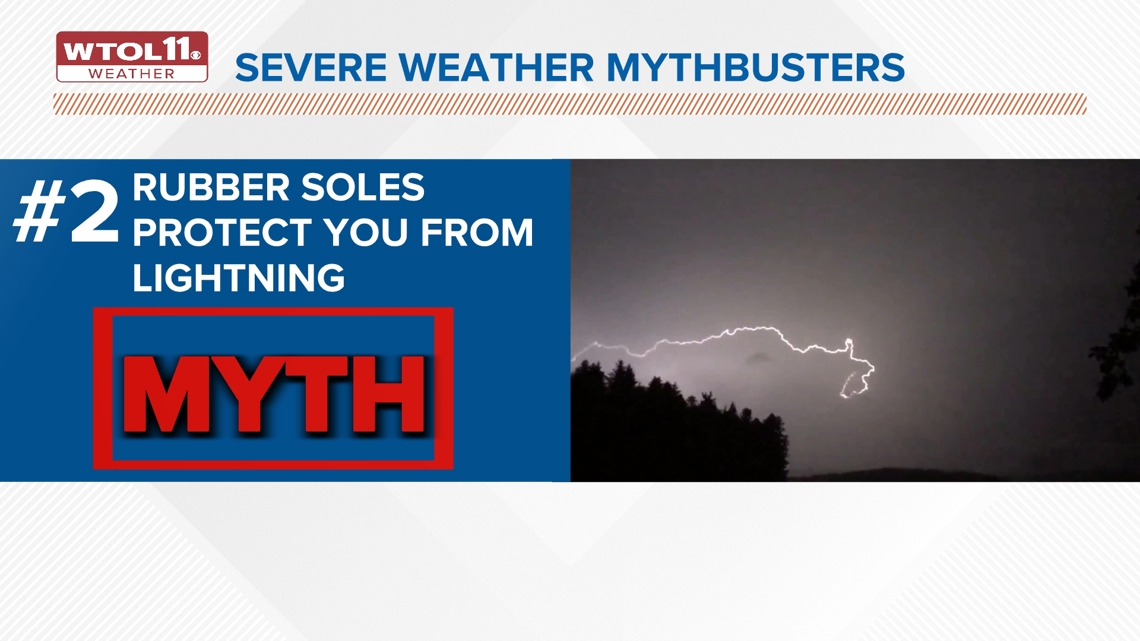
Lightning has a significant amount of voltage and energy when it strikes. Just simply having rubber shoes or soles will not protect your entire body or prevent you from getting struck by lightning.
According to East Lake Fire Rescue in Florida, rubber-soled shoes and rubber tires do not protect from lightning, either. The steel frame of a hard-topped vehicle provides increased protection if you are not touching metal. Although you may be injured if lightning strikes your car, you are much safer inside of a vehicle than outside it.
#3 Thunderstorms and tornadoes always move from west to east

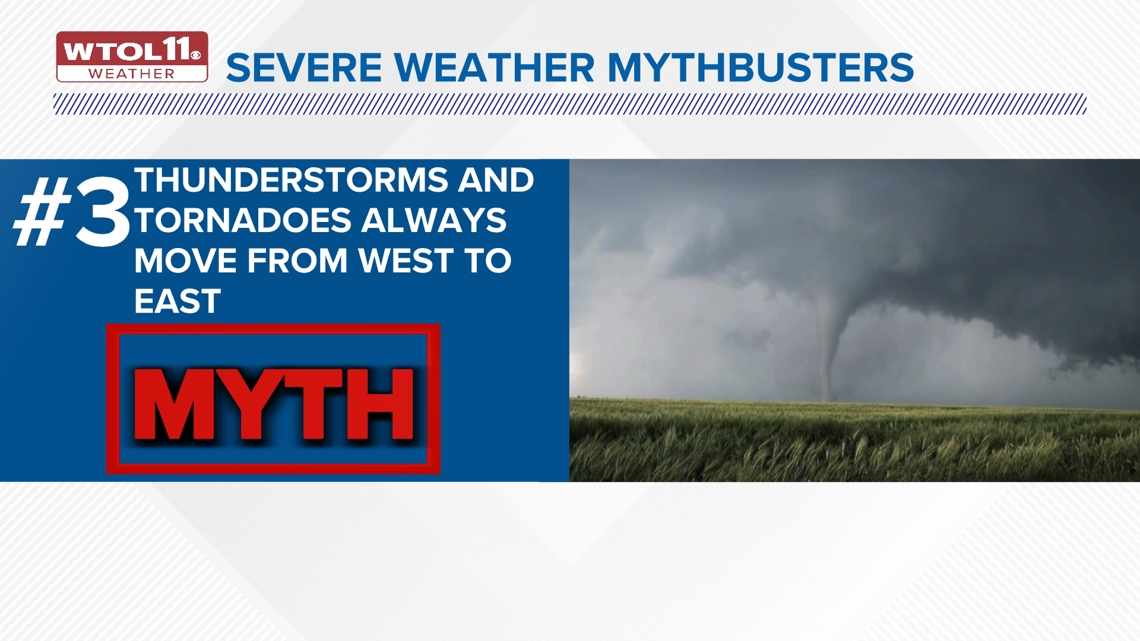
This is one of the more common misconceptions when it comes to weather. Most of our larger weather systems that bring weather across the U.S. do move in this direction, but storm systems can develop from all different directions, especially tornadoes.
One great example of this is hurricanes. We typically see hurricanes move in a more counterclockwise move while traveling southeast to the northwest before curving out. Tornadoes can develop within these systems and move in a different direction.
Although there are some instances where this happens, most weather systems and patterns tend to travel from west to east more often than not. Always be aware of thunderstorms and tornadoes switching directions.
#4 Flash floods can occur along flowing streams

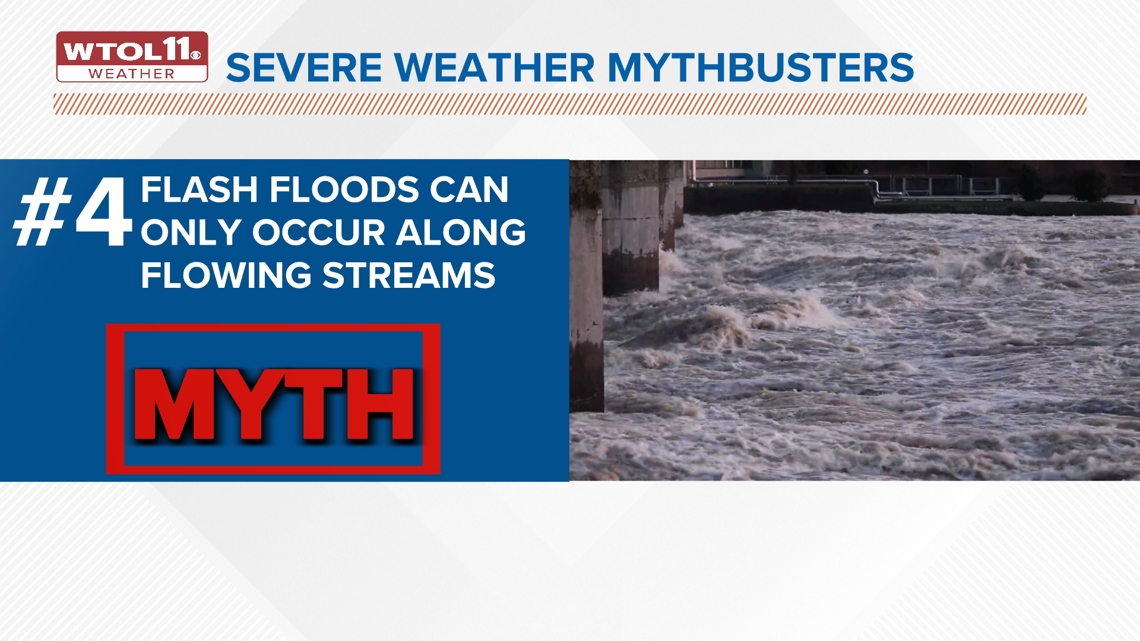
Flash flooding does not only occur when there is another source of water to fuel it.
It can happen during torrential rain events, where you can get a great amount of rain within a short amount of time.
There does not have to be a body of water nearby for this to happen, either. Flash floods can occur in the middle of neighborhoods where there are no bodies of water nearby.
If you have owned a house, understanding the lay of the land matters, especially if you are in a flood plain. Researching if water is nearby and if the area is flood-prone can save a heap of problems down the road during flood events.
#5 Tornadoes do not affect downtown or populated areas

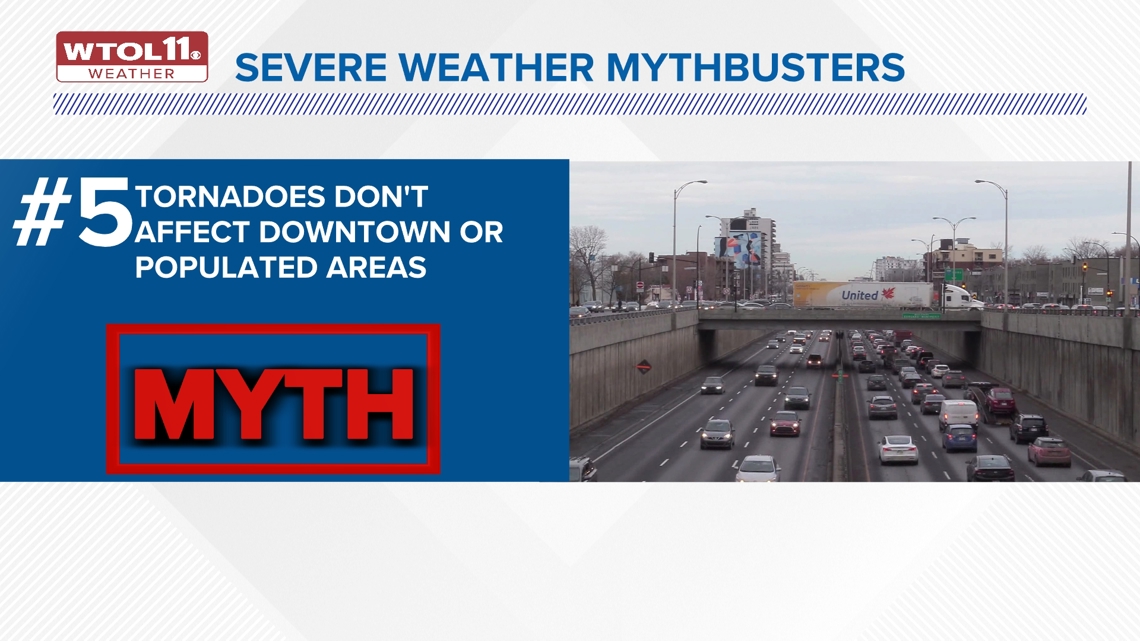
Expecting tornadoes to not affect populated or downtown areas can be extremely dangerous to predict.
Over the years, there have been several big cities that have been affected by tornadoes in populated areas.
One example of this is when an EF-2 tornado struck the Georgia Dome in the heart of downtown Atlanta, causing damage during the 2008 SEC Basketball Tournament.
One thing to point out is large and tall buildings do not disrupt or weaken tornadoes.
According to the National Weather Service, tornadoes are typically 5-10 miles tall, meaning a tall building with a height of 500-1,000 feet cannot deflect or destroy a tornado.
#6 Large and heavy vehicles are safe to go through flooded waters

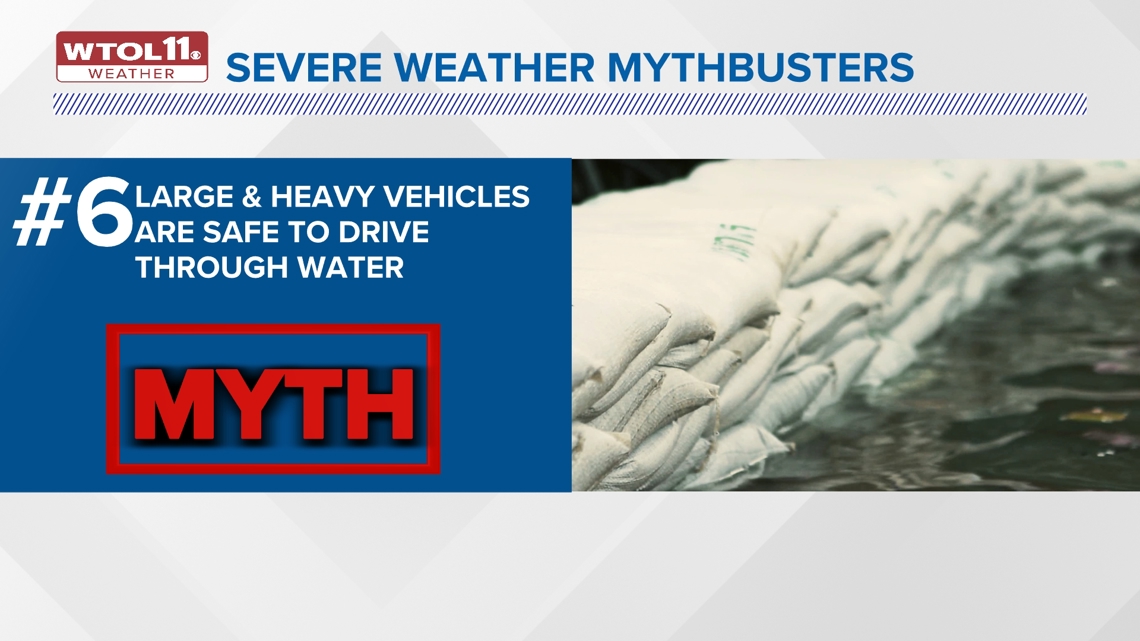
When there are flooded roadways, it always gives a headache to your travel plans while trying to get from point A to point B.
If you have a higher elevated car or even a truck, it is quite easy to think that a truck makes it through the water.
No vehicle is safe to cross flooded waters, as it only takes a couple of feet of water to move or sweep away a vehicle or truck, so you should never purposely drive through flooded waters.
#7 Tornadoes never strike in the same place twice

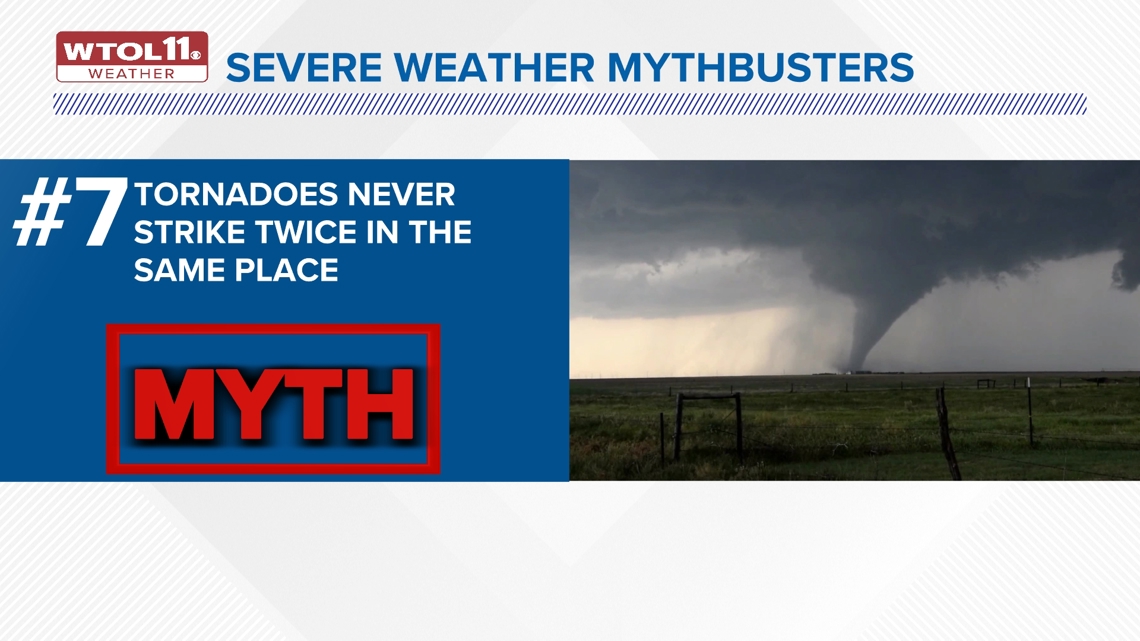
Anyone who has experienced a tornado knows that it can leave a devasting mark on your life and home if damaged.
It is very possible for a tornado to hit in the same place twice, though.
Many areas across the Midwest and south U.S. see multiple tornadoes each year. Although it is rare to see it in the same severe weather season, it is still very possible over multiple years to see the same path roll through the same area.
According to the National Weather Service, Codell, Kan., was struck by a tornado on May 20 three years in a row: 1916, 1917 and 1918.
In Guy, Ark., three tornadoes hit the same church on the same day.
#8 Seeking shelter under a bridge overpass during severe weather is safe

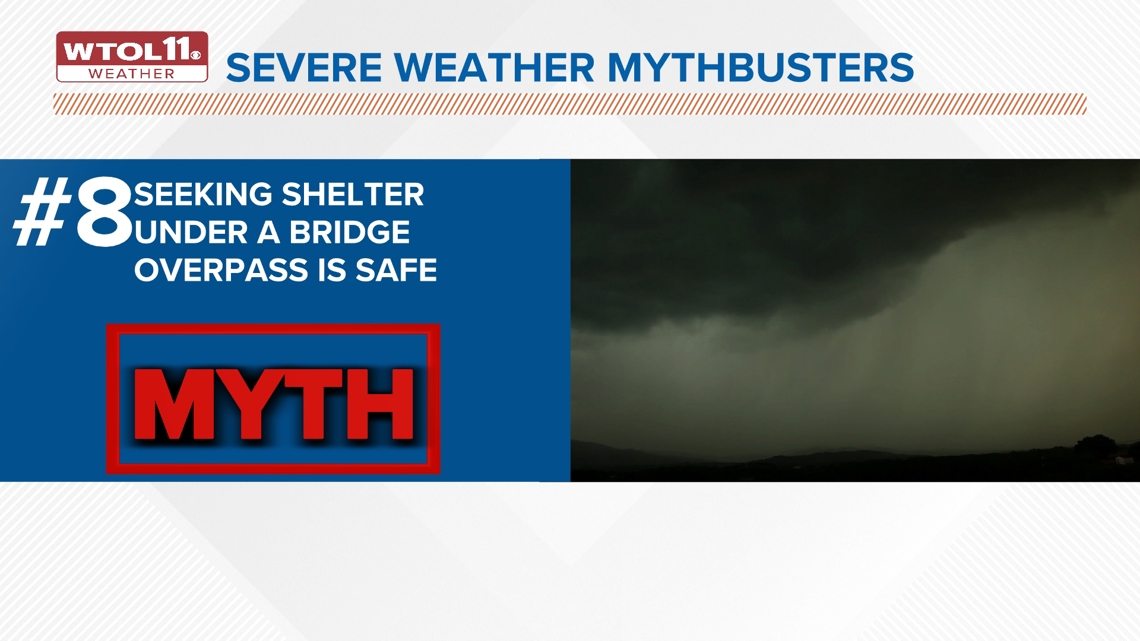
Being out in the elements during severe weather is a very unsafe thing to do, so make sure you always know what to expect from the weather before heading out.
If severe weather is bearing down on you and see a bridge, it is still not safe to stop under it because flying debris could be thrown under the bridge causing damage and a life-threatening situation with storm debris and fierce winds.
If you have time, always look to find a tornado shelter nearby, or find the the lowest terrain possible to protect yourself from any severe weather that is happening.
#9 Waterspouts cannot come onto land

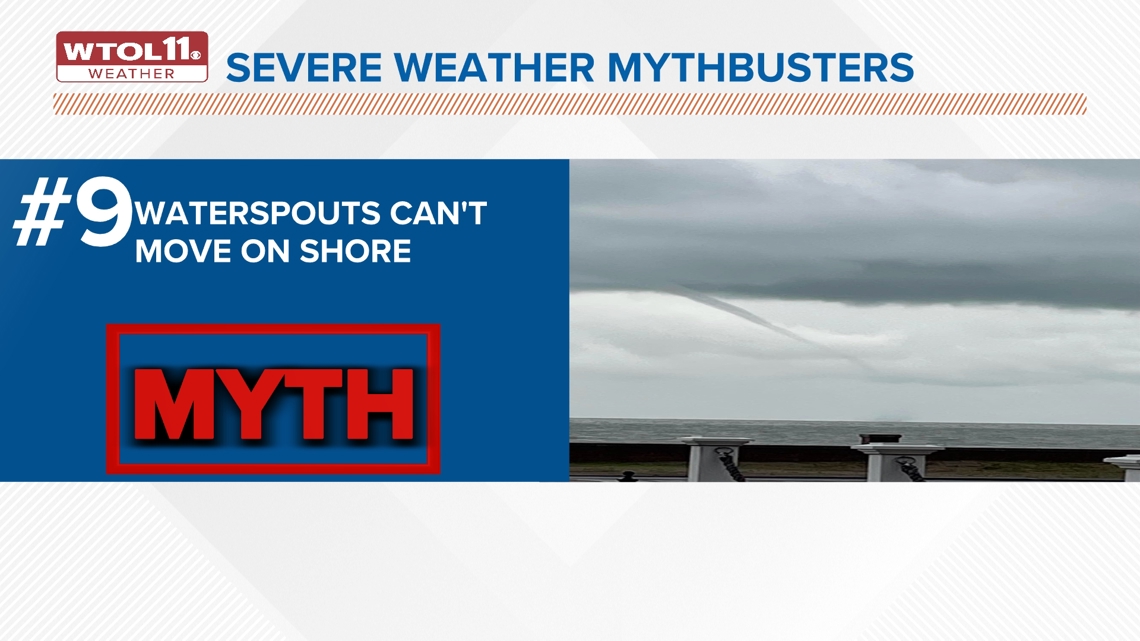
Similar to tornadoes, waterspouts form in the same way, just over water. They are usually completely harmless if you do not engage with them on your boat.
Depending on the direction it moves, there is a rare chance it could contact the land. At this point, the National Weather Service would put out a tornado warning since it is on land.
The good news is once a waterspout makes contact with land, rarely, it rarely lives much longer after that, due to the weaker rotation that waterspouts have.
Any time you are on the beach, always check the weather before heading out, to avoid getting caught in the crosshair of a waterspout.
#10 It is safe to shower during a thunderstorm

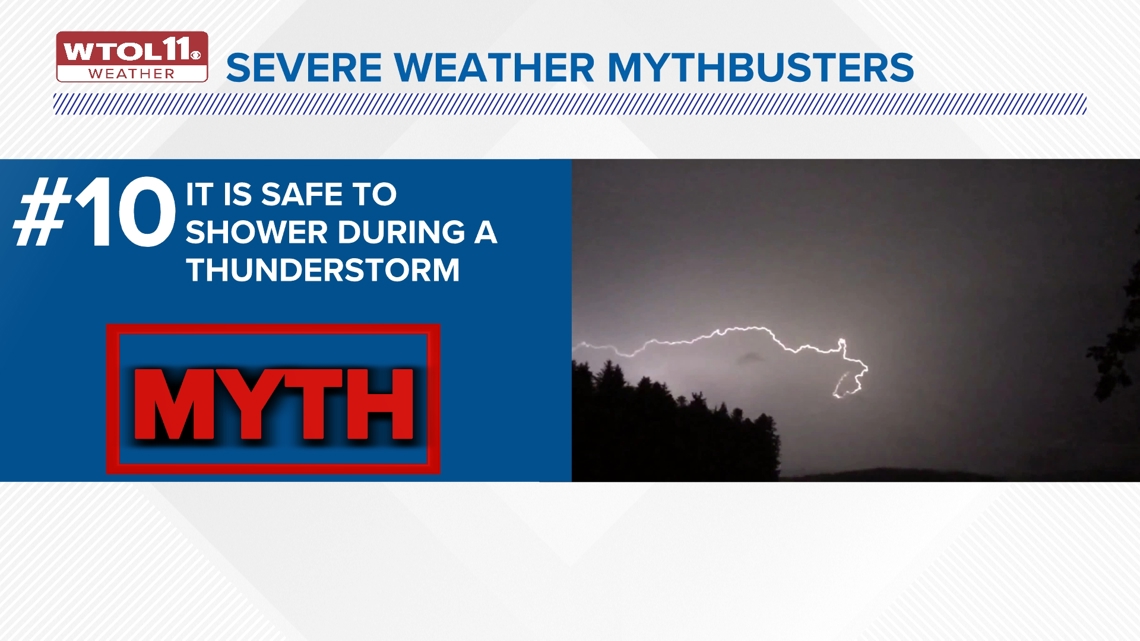
If you are at home wanting to get clean, make sure you always check the weather before getting in the shower.
According to Cleveland Clinic, when a thunderstorm is raging, lightning can strike a house and travel through its plumbing to strike you, making showering during a thunderstorm an unsafe practice. This is true even if you have plastic pipes because water is a good conductor of electricity.
After a thunderstorm has passed, it is always safe to wait at least 30 minutes to an hour before showing, due to storms being able to produce lighting many miles in front and back of a thunderstorm.

